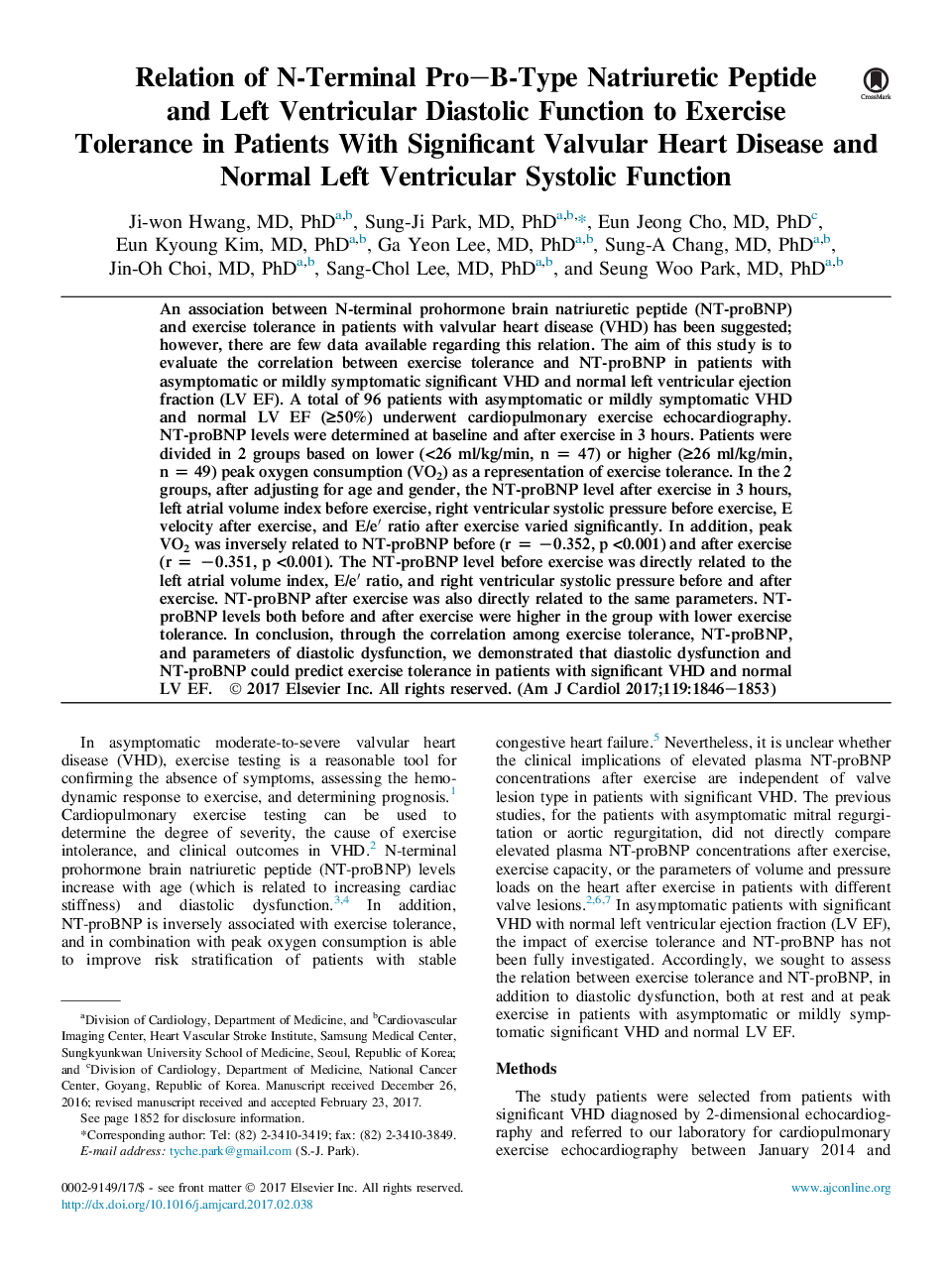| کد مقاله | کد نشریه | سال انتشار | مقاله انگلیسی | نسخه تمام متن |
|---|---|---|---|---|
| 5594912 | 1572086 | 2017 | 8 صفحه PDF | دانلود رایگان |
عنوان انگلیسی مقاله ISI
Relation of N-Terminal Pro-B-Type Natriuretic Peptide and Left Ventricular Diastolic Function to Exercise Tolerance in Patients With Significant Valvular Heart Disease and Normal Left Ventricular Systolic Function
دانلود مقاله + سفارش ترجمه
دانلود مقاله ISI انگلیسی
رایگان برای ایرانیان
موضوعات مرتبط
علوم پزشکی و سلامت
پزشکی و دندانپزشکی
کاردیولوژی و پزشکی قلب و عروق
پیش نمایش صفحه اول مقاله

چکیده انگلیسی
An association between N-terminal prohormone brain natriuretic peptide (NT-proBNP) and exercise tolerance in patients with valvular heart disease (VHD) has been suggested; however, there are few data available regarding this relation. The aim of this study is to evaluate the correlation between exercise tolerance and NT-proBNP in patients with asymptomatic or mildly symptomatic significant VHD and normal left ventricular ejection fraction (LV EF). A total of 96 patients with asymptomatic or mildly symptomatic VHD and normal LV EF (â¥50%) underwent cardiopulmonary exercise echocardiography. NT-proBNP levels were determined at baseline and after exercise in 3 hours. Patients were divided in 2 groups based on lower (<26 ml/kg/min, n = 47) or higher (â¥26 ml/kg/min, n = 49) peak oxygen consumption (VO2) as a representation of exercise tolerance. In the 2 groups, after adjusting for age and gender, the NT-proBNP level after exercise in 3 hours, left atrial volume index before exercise, right ventricular systolic pressure before exercise, E velocity after exercise, and E/eâ² ratio after exercise varied significantly. In addition, peak VO2 was inversely related to NT-proBNP before (r = â0.352, p <0.001) and after exercise (r = â0.351, p <0.001). The NT-proBNP level before exercise was directly related to the left atrial volume index, E/eâ² ratio, and right ventricular systolic pressure before and after exercise. NT-proBNP after exercise was also directly related to the same parameters. NT-proBNP levels both before and after exercise were higher in the group with lower exercise tolerance. In conclusion, through the correlation among exercise tolerance, NT-proBNP, and parameters of diastolic dysfunction, we demonstrated that diastolic dysfunction and NT-proBNP could predict exercise tolerance in patients with significant VHD and normal LV EF.
ناشر
Database: Elsevier - ScienceDirect (ساینس دایرکت)
Journal: The American Journal of Cardiology - Volume 119, Issue 11, 1 June 2017, Pages 1846-1853
Journal: The American Journal of Cardiology - Volume 119, Issue 11, 1 June 2017, Pages 1846-1853
نویسندگان
Ji-won MD, PhD, Sung-Ji MD, PhD, Eun Jeong MD, PhD, Eun Kyoung MD, PhD, Ga Yeon MD, PhD, Sung-A MD, PhD, Jin-Oh MD, PhD, Sang-Chol MD, PhD, Seung Woo MD, PhD,